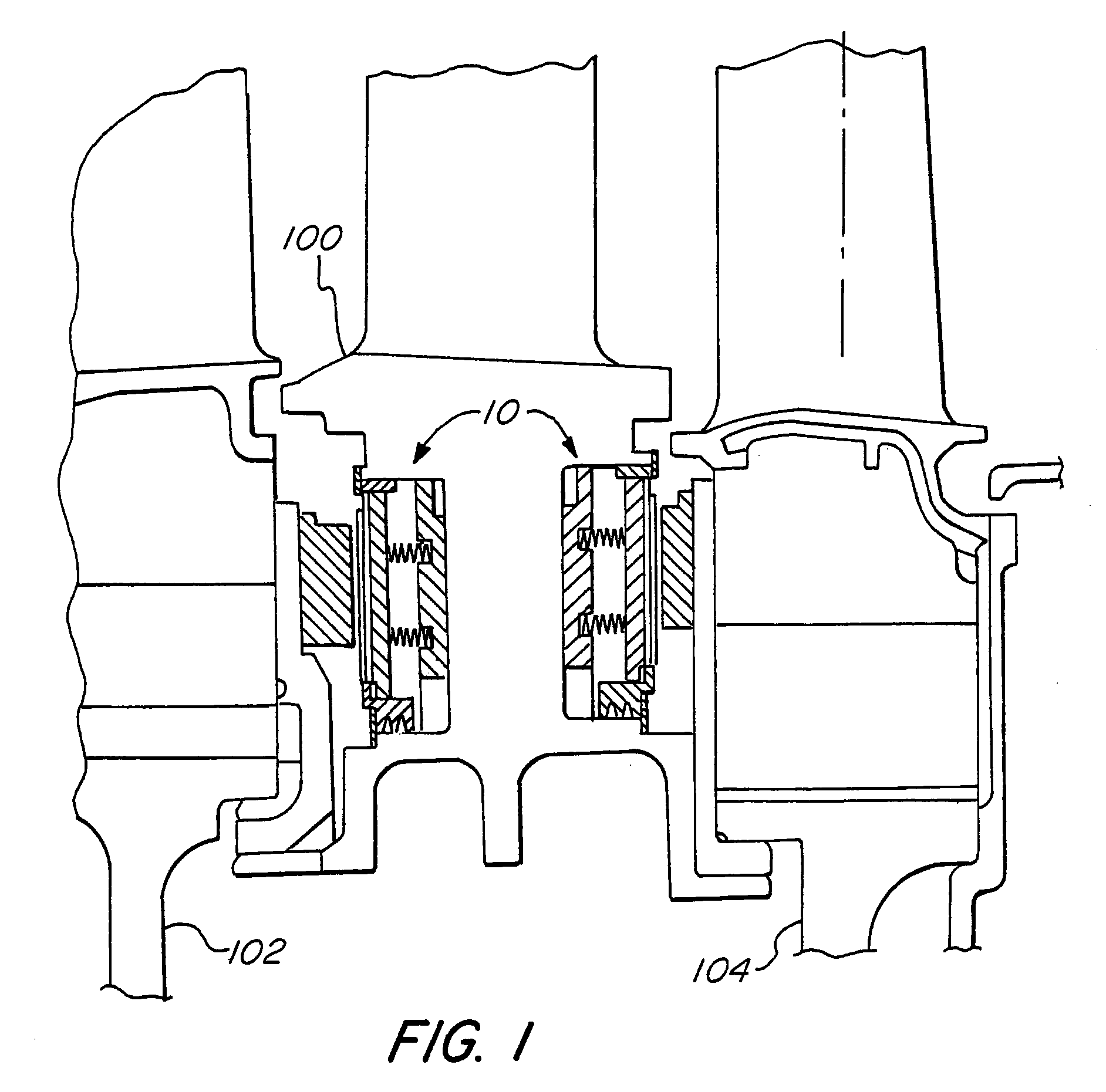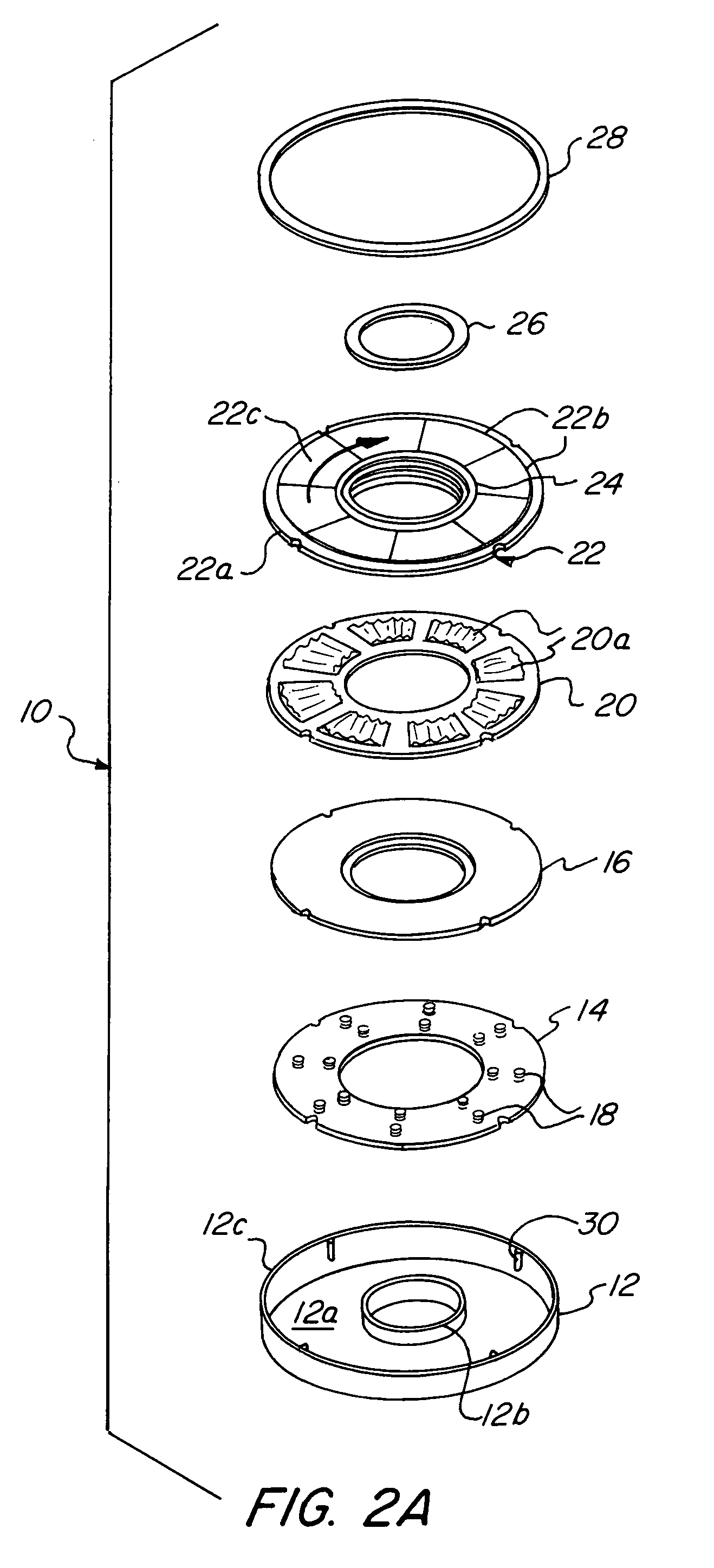Hydrodynamic foil face seal
a foil face seal and hydrodynamic technology, applied in the direction of sliding contact bearings, mechanical equipment, machines/engines, etc., can solve the problems of insufficient differential pressure to separate the seal face, failure to achieve hydrostatic seals, and inability to use hydrostatic seals
- Summary
- Abstract
- Description
- Claims
- Application Information
AI Technical Summary
Benefits of technology
Problems solved by technology
Method used
Image
Examples
Embodiment Construction
[0027]Gas film riding seals have found wide acceptance in pipeline and process industry turbomachinery. However, such seals have not found utility in gas turbine prime movers.
[0028]The gas turbine operating environment requires that the seals operate at relatively high surface velocities and higher temperatures than those of all other applications, and flight-worthy gas turbines must meet additional restrictions on the allowable size and weight of the seal. Furthermore, the structural portions of an aircraft engine are lightweight, which means that the seal cannot be completely isolated from the distortion of the surrounding structure. It is this last problem which more than anything else has prevented the use of film-riding bearings in gas turbine aircraft engines.
[0029]This invention provides a hydrodynamic foil face seal that is much better than prior art devices at accommodating axial excursions, misalignments, out-of-flatness, conical distortion and circumferential distortion. ...
PUM
 Login to View More
Login to View More Abstract
Description
Claims
Application Information
 Login to View More
Login to View More - R&D
- Intellectual Property
- Life Sciences
- Materials
- Tech Scout
- Unparalleled Data Quality
- Higher Quality Content
- 60% Fewer Hallucinations
Browse by: Latest US Patents, China's latest patents, Technical Efficacy Thesaurus, Application Domain, Technology Topic, Popular Technical Reports.
© 2025 PatSnap. All rights reserved.Legal|Privacy policy|Modern Slavery Act Transparency Statement|Sitemap|About US| Contact US: help@patsnap.com



